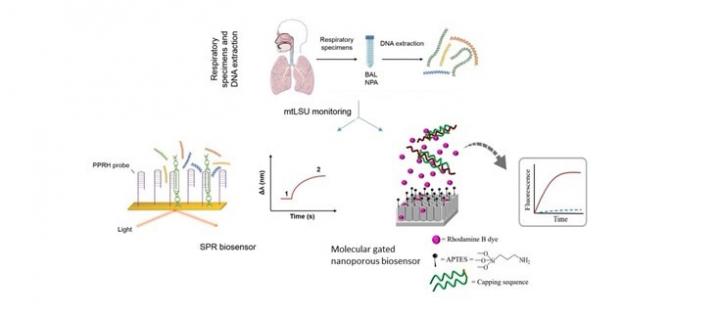This project has detected this atypical fungus, responsible for very serious pneumonia in immunosuppressed patients

Credit: Instituto de Biomedicina de Sevilla
The group led by Dr. Enrique J. Calderón – “Clinical Epidemiology and Vascular Risk” at the Institute of Biomedicine of Seville – IBiS/University Hospitals Virgen del Rocío and Macarena/CSIC/University of Seville, also a member of CIBERESP, participated in a project with researchers from CIBER-BBN, in which they developed systems to detect Pneumocystis jirovecii, an atypical fungus responsible for very severe pneumonia in immunosuppressed patients. The results have been published in the journals Nanomaterials and Journal of Fungi, and are the fruit of collaboration with the CIBER-BBN groups led by Dr. Laura Lechuga, Dr. Ramon Eritja and Dr. Ramón Martínez Máñez.
Currently, the detection of the fungus in patients, who may be asymptomatic carriers until they develop pneumonia, uses the PCR technique, which takes several hours and requires adequate facilities and qualified personnel. However, the application of nanotechnology now makes it possible to develop more sensitive and efficient biosensors to detect specific sequences corresponding to pathogens responsible for infectious diseases in a shorter time and without the need for major infrastructure.
In this case, a specific sequence that corresponds to the gene belonging to the ribosomal subunit (mtLSU rRNA) of the fungus P. jirovecii has been detected using fork-shaped capture probes. These specific probes, “are more efficient and capable of recognising a specific genomic sequence of the fungus and forming very stable triplex structures that can be detected in different biosensor platforms,” as Dr. Avignon, a CIBER-BBN researcher at the IQAC-CSIC, points out.
Using an optical biosensor based on SPR technology, Dr. Laura Lechuga’s team at ICN2 was able to detect, in real time and without the use of markers, P. jirovecii in bronchoalveolar lavages and nasopharyngeal aspirates with a limit detection at the nM level and all in a matter of minutes.
Likewise, the group headed by Dr. Ramón Martínez-Máñez, scientific director of CIBER-BBN and principal investigator of the IQMA-IDM group at the Universitat Politècnica de València, used the strategy of molecular gates composed of an anodic albumin matrix to develop a sensor capable of efficiently detecting real samples of P. jirovecii without prior amplification steps in just one hour.
“These advances in the diagnosis of PcP have great potential for the development of highly sensitive point-of-care devices using samples taken straight from patients and are applicable in a wide variety of settings,” says Dr. Enrique J. Calderón, internist at the Virgen del Rocío University Hospital in Seville and senior lecturer in the Department of Medicine.
The researchers also emphasise that these techniques are very selective and can discriminate patients with other respiratory pathologies derived from other microorganisms, thus enabling a more reliable diagnosis of infectious diseases.
###
Media Contact
Enrique J. Calderon
@unisevilla
34-955-923-000
Original Source
https:/
Related Journal Article
http://dx.




